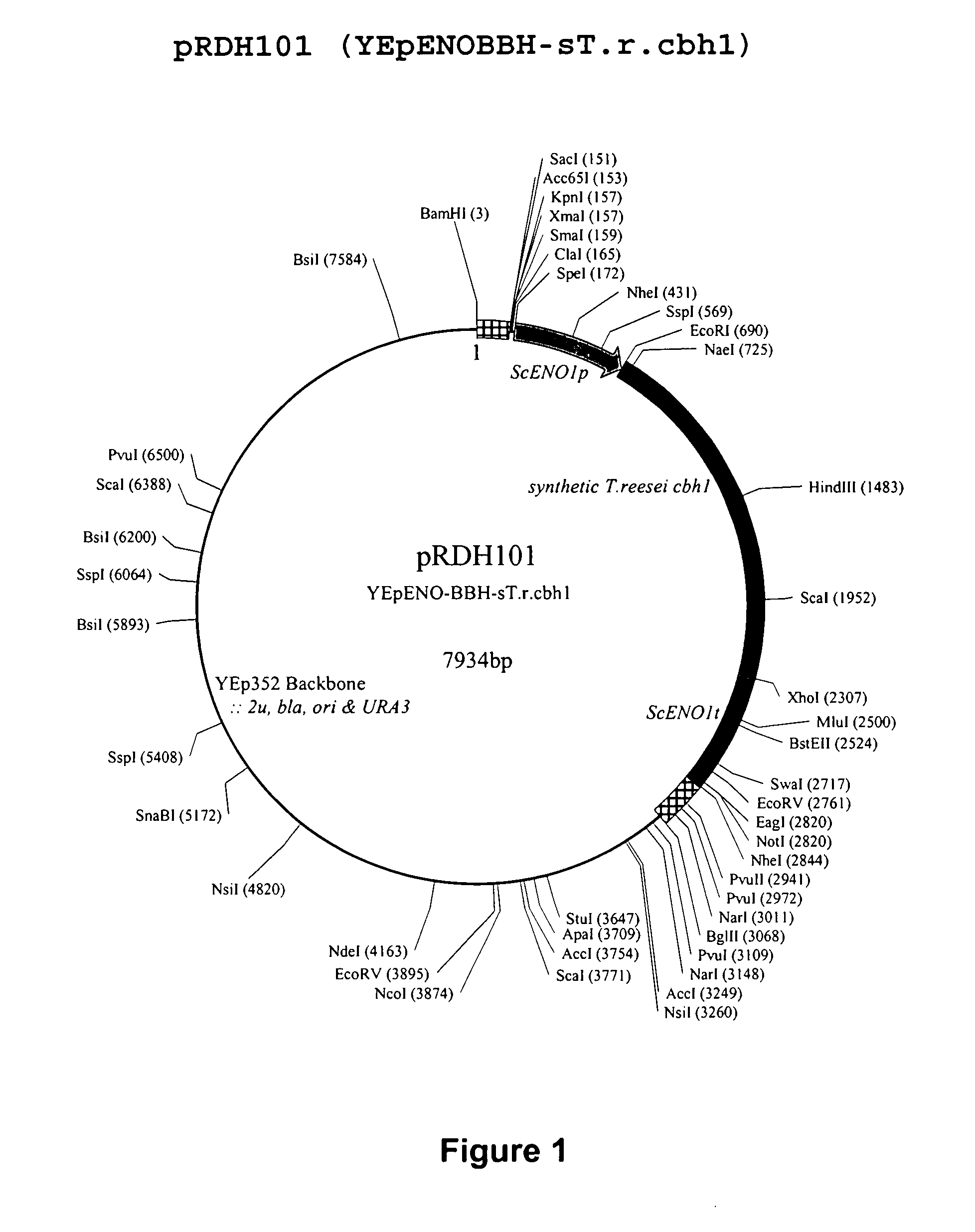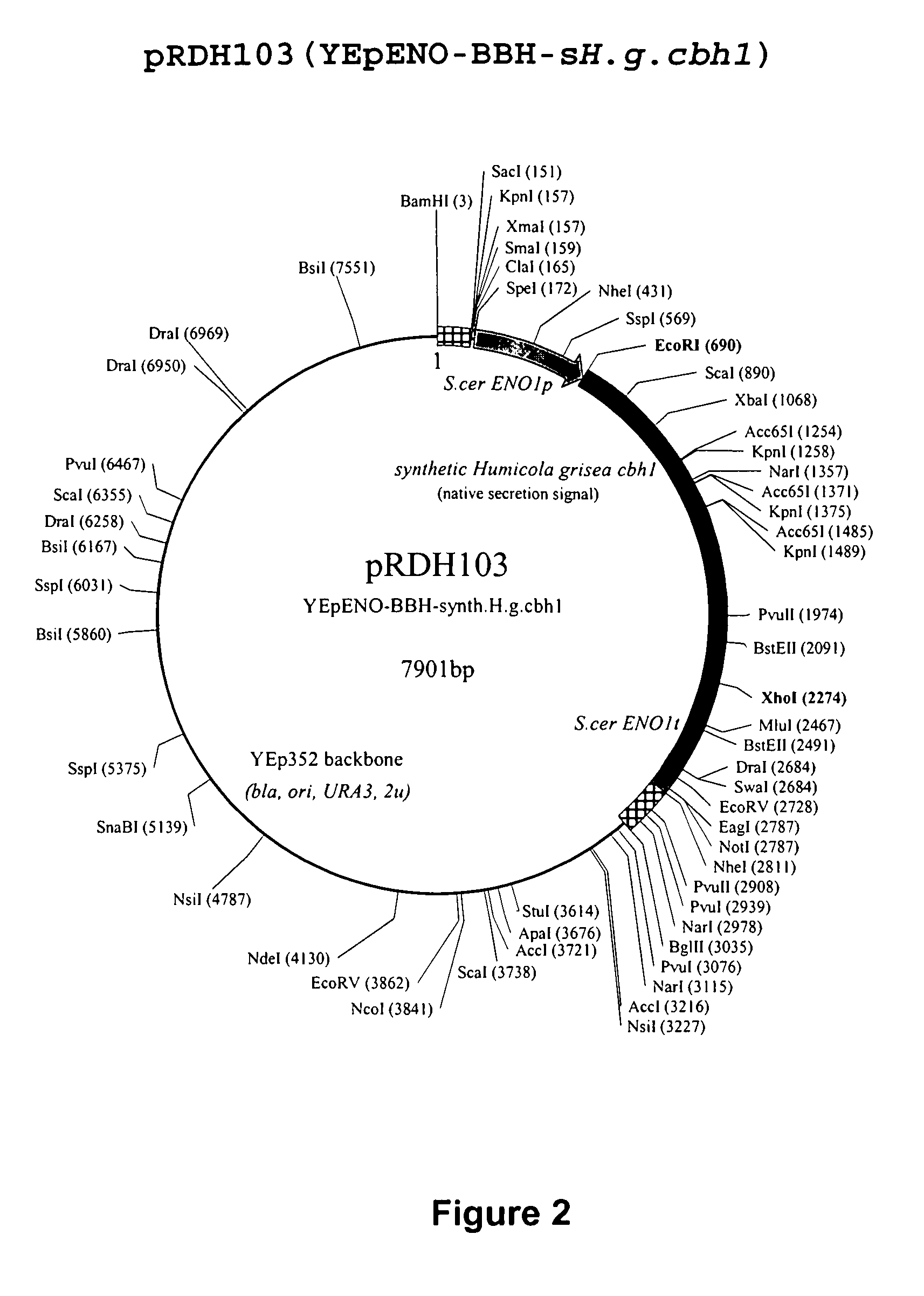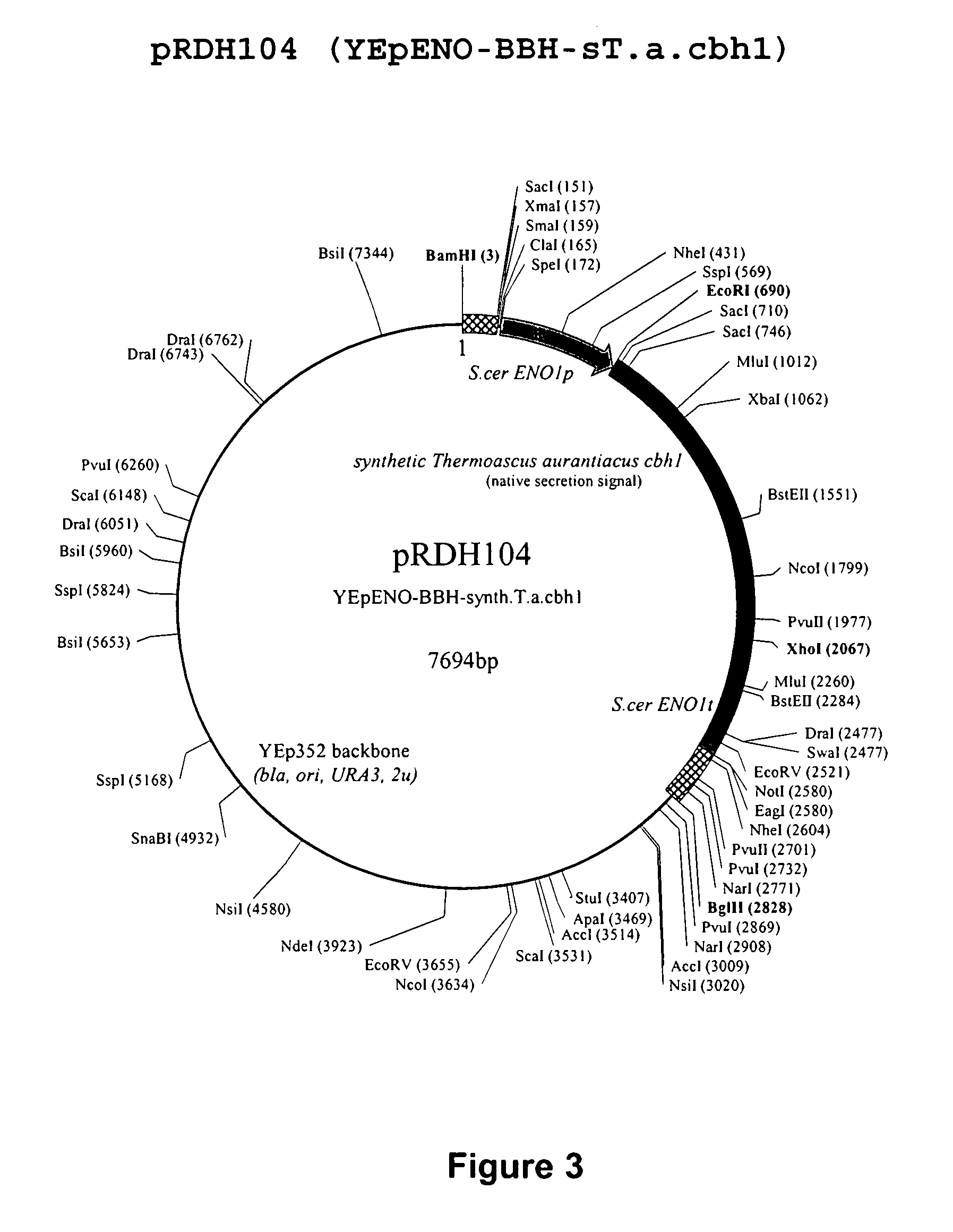Heterologous Expression of Fungal Cellobiohydrolases in Yeast
a technology of fungal cellobiohydrolase and heterologous expression, which is applied in the field of heterologous expression of fungal cellobiohydrolase in yeast, can solve the problems of inability to achieve amorphous cellulose fermentation, lack general absence of low-cost technology for overcoming the recalcitrance of these materials, etc., to achieve the effect of facilitating ethanol production and cellulose hydro
- Summary
- Abstract
- Description
- Claims
- Application Information
AI Technical Summary
Benefits of technology
Problems solved by technology
Method used
Image
Examples
example 1
Cloning of Codon-Optimized cbh Genes and their Expression in Saccharomyces cerevisiae
[0214]Cellobiohydrolase (cbh) genes from various fungal organisms (as indicated in Table 4 below) were codon-optimized for expression in the yeast Saccharomyces cerevisiae. The software available at http: / / phenotype.biosci.umbc.edu / codon / sgd / index.php applying the CAI codon usage table suggested by Carbone et al. 2003 was utilized to generate an initial sequence that had a codon adaptation index (CAD of 1.0, where three-letter sequences encoding for individual amino acid codons were replaced with those three-letter sequences known to be most frequently used in S. cerevisiae for the corresponding amino acid codons.
[0215]The initial codon-optimized sequence generated by this software was then further modified. In particular, the software was utilized to identify certain stretches of sequence (e.g., sequences with 4, 5, 6, 7, 8, 9, or 10 contiguous A's or T's), and replace these sequences with three-l...
example 2
Cloning of cbh Combination Constructs and their Expression in Saccharomyces cerevisiae
[0226]Additional combination constructs and strain completion are summarized as follows in Table 6.
[0227]Four constructs combining the H. grisea cbh1 and T. aurantiacus cbh1 with the synthetic T reesei cbh2 were assayed. This was done to capitalize on the greater activity of these cbh1's on avicel as was found earlier. The plasmids with combinations of cellulases were constructed by cloning the relevant gene cassette (ENOp-cbh-ENOt) from the YEp-ENO-BBH based plasmid as a BamHI-BglII fragment into the unique BamHI site of the pJC1 based plasmid(s).
[0228]Assays were conducted on strains containing the plasmids pRDH118, pRDH119, pRDH120, pRDH121 on PASC and Avicel cellulosic substrates. Assay results obtained are given in Table 6 below:
TABLE 6Synthetic CBH genes cloned into yeast expression vectors,transformed to S. cerevisiae Y294 and assayed.ExpressionTransformedFUR1Act. (PASC)Act. (Avicel)Plasmid...
example 3
Cloning and Expression of T. emersonii cbh1 Fusion Constructs and their Expression in Saccharomyces cerevisiae
[0232]The native T. emersonii CBH1 does not have a cellulose binding module (CBM), however when expressed in S. cerevisiae it showed the best specific activity.
[0233]As described further below, a fusion construct of CBM from T. reesei Cbh2 and linker to the T. emersonii CBH1 was created. In the first construct the T. reesei cbh2 sequence encoding for the CBM domain was fused at the N-terminal side of the T. emersonii cbh1 and the second construct the T. reesei cbh1 encoding for the CBM was fused to the C terminal side of the T. emersonii CBH1. Both of these constructs also contain the T. reesei xyn2 secretion signal sequence to direct the T. emersonii CBH1 to the extracellular medium. A third construct only replaces the native secretion signal with the T. reesei xyn2 secretion signal.
[0234]An S. cerevisiae FUR1-disrupted Y294 strain was transformed with the following constr...
PUM
| Property | Measurement | Unit |
|---|---|---|
| cell density | aaaaa | aaaaa |
| temperature | aaaaa | aaaaa |
| temperature | aaaaa | aaaaa |
Abstract
Description
Claims
Application Information
 Login to View More
Login to View More - R&D
- Intellectual Property
- Life Sciences
- Materials
- Tech Scout
- Unparalleled Data Quality
- Higher Quality Content
- 60% Fewer Hallucinations
Browse by: Latest US Patents, China's latest patents, Technical Efficacy Thesaurus, Application Domain, Technology Topic, Popular Technical Reports.
© 2025 PatSnap. All rights reserved.Legal|Privacy policy|Modern Slavery Act Transparency Statement|Sitemap|About US| Contact US: help@patsnap.com



